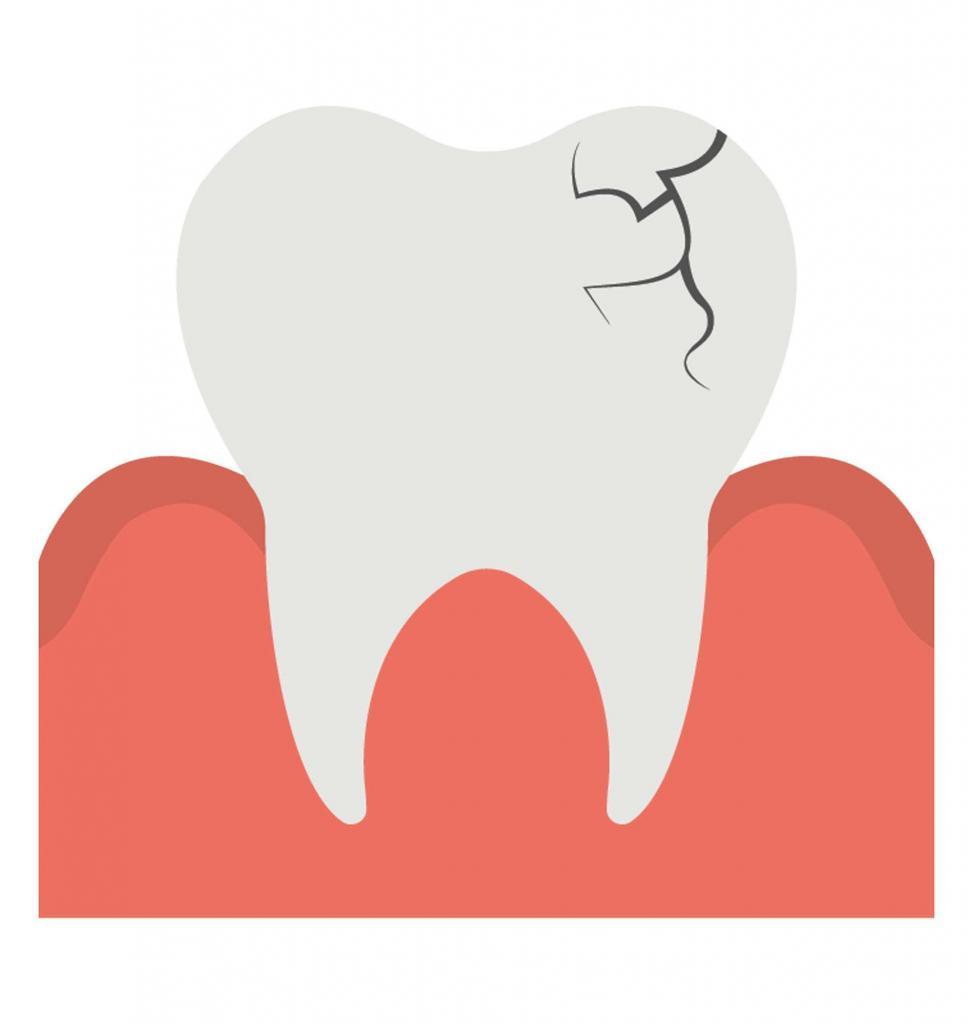Did you know that your teeth are the hardest part of your body? Even harder than your bones! Yet despite the strength of the calcified tissue (dentine) that makes up the majority of each tooth, your teeth are also quite vulnerable. By chomping down on a hard object (such as ice or hard candy) or grinding your teeth, you could accidentally crack your tooth. If this happens to you, contact your dentist right away to schedule an appointment and learn how to fix a cracked tooth.

How to Fix a Cracked Tooth
A minor crack in your tooth may just be a cosmetic issue, but a serious fracture can threaten the integrity of your tooth and demands immediate attention. The only way to know whether or not your tooth requires treatment is to visit your dentist for an examination.
Before your appointment, pay attention to your tooth so that you can clearly explain your concerns to your dentist and dental hygienist. Have you noticed any pain? If so, when does it hurt – when eating, when exposed to hot/cold temperatures?
In addition, try to avoid chewing on the cracked tooth so that you don’t irritate it or cause further damage. If you’re experiencing pain, consider taking an over-the-counter pain reliever. You could also rinse your mouth with salt water to cleanse the area and inhibit bacteria.
Commonly Recommended Treatments
Once your dentist has assessed your teeth, he or she can recommend how to fix a cracked tooth that’s bothering you. These are the most commonly recommended treatments:
- No Treatment: If the issue is cosmetic and only affects the outer layer of your tooth (the enamel), your dentist may recommend leaving it alone. Minor cracks are relatively common amongst adults. Your dentist may polish the tooth, however, to improve its appearance.
- Filling or Bonding: If the crack chipped off a small piece of tooth enamel, your dentist may recommend a filling to repair the damage. If the tooth can be seen when you smile, your dentist may recommend bonding using a tooth-colored resin. After the application and shaping, your tooth will look and function like a normal tooth.
- Veneer: If only the front portion of the tooth is cracked, your dentist may remove the damaged enamel and then add a veneer. An extremely thin shell of tooth-colored porcelain or resin composite, a veneer will restore the appearance of your tooth.
- Crown: If the crack is relatively deep but can be repaired with a filling material, your dentist may use this treatment and then top it off with a crown to prevent further damage. A tooth-shaped cap, the crown will protect the tooth and improve its appearance.
- Root Canal: If the crack has impacted the soft tissue of your inner tooth, your dentist may recommend a root canal to remove the damaged tissue. This treatment can save the tooth by preventing infections and abscesses. Following the root canal, a crown will be added to protect the now-healthy tooth.
- Extraction: In severe cases, the tooth must be removed entirely. This typically occurs when the crack affects the root of the tooth. Once the tooth is removed, your dentist can recommend options for replacement, such as a bridge or implant.
_____
If you enjoy chomping down on ice or hard candy, you may want to rethink your habits. Your teeth may be strong, but they aren’t impenetrable!
Have you spotted a crack in your smile? If you’re looking for an experienced, reliable, and friendly dentist near Springfield, Missouri, contact Wilkinson Dental. Dr. Wilkinson and his team will give you the personalized treatment you deserve using state-of-the-art technology. For exceptional and comprehensive dental care, schedule your first appointment today by calling 417-708-0556 or requesting an appointment online. We look forward to hearing from you!